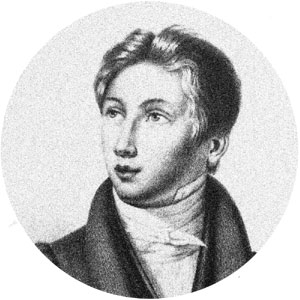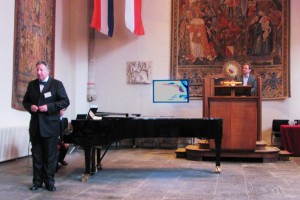Liszt and the art of internet research
On-line libraries nowadays allow researchers a vastly wider view of history than traditional paper libraries. Even ten years ago, this perspective was only for futurists and science-fiction fans. In the past three years, we have gained close to two-hundred years of history by the inclusion of scanned ancient books and records in digital libraries. No longer does one need to fill in request forms at libraries with a series of authorizations to be allowed to search through piles and piles of historic documents. The massive digitization by libraries of (nearly) all books, newspapers, letters, and other printed or written material can easily match the efforts to find the human DNA genome.
 The composer Franz Liszt was born in 1811 and died in 1886. Some of his compositions in later life were considered too modern by his publishers and thus remained unpublished. It took almost one hundred years for them to reach the audience. It was at a private concert of newly discovered Liszt music, around 1980, when I heard a beautiful melody that Liszt supposedly had written in in 1828 for his first love.
The composer Franz Liszt was born in 1811 and died in 1886. Some of his compositions in later life were considered too modern by his publishers and thus remained unpublished. It took almost one hundred years for them to reach the audience. It was at a private concert of newly discovered Liszt music, around 1980, when I heard a beautiful melody that Liszt supposedly had written in in 1828 for his first love.
Mesmerized by the melody and its romantic subject I tried to learn more about this piano composition and the girl that Liszt fell in love with: Countess Caroline de Saint-Cricq, daughter of a French Minister of Commerce. After many fruitless attempts I gave up. Libraries in those days were structured to lock-up knowledge rather than to share it. Finding a needle in a haystack would have been easier than finding the origin of this 1828 Liszt composition.
In the late 1990's and early years of the new century I was engaged by Global Crossing to break the monopoly of incumbent carriers by constructing glassfibre routes between cities, countries, and continents. The internet was invented almost a decade earlier but remained restricted to governments, research laboratories and few large companies because the costs of transporting data was artificially kept high by the incumbents. It could only expand to the size we know today when private companies such as Global Crossing installed affordable global superhighways. They caused the computer architecture to evolve from complex stand-alone, all-in-one, mainframe systems to a grid-based architecture using thousands of interacting small computers. The affordable data superhighways ignited the peer-to-peer sharing and collaboration systems we take for granted today. Distributed storage became the new standard, with data clouds as the logical next step.
The price of communication went down by a factor of one hundred. The same happened with the price of storage. The digital library came into view. Organizations such as the Gutenberg Project, the Web Archive, and the young Google company started to transfer millions of paper document pages into data that could be explored by everyone.
 It was in 2007 when Google scanned an obscure French language dictionary from the middle of the 19th century and made it available on-line. It contained translations of the old Gascon and Occitan languages into French.
It was in 2007 when Google scanned an obscure French language dictionary from the middle of the 19th century and made it available on-line. It contained translations of the old Gascon and Occitan languages into French.
It was this on-line dictionary that caused the first hit on my search for the Liszt composition I heard in my youth. To my surprise, the composition had a totally different meaning than the one presented by Liszt scholars at the time.
When business allowed it several years later I invested six months of my time to research the Liszt song and the countess de Saint-Cricq. My internet research in combination with several travels to France generated so many new leads
that the six months expanded to almost two years, in which I presented my findings amongst leading Liszt scholars at an international conference and eventually published a book about this composition. If you're interested you can find details on my www.saint-cricq.com website.
It was my building of the global internet that allowed me to eventually resolve a musical mystery that had been part of me for over thirty years. Based on this I cannot wait to explore other developments that the internet will bring us in the future.
Gert Nieveld, October 2011
Update February 2015: A new sabbatical research project of an 1855 painting has led me into the Louvre and the Compiegne museums. This 'Soiree au Louvre" project is targeted for completion 'somewhere' in 2020.